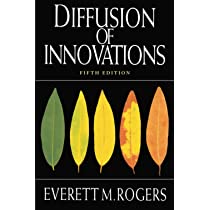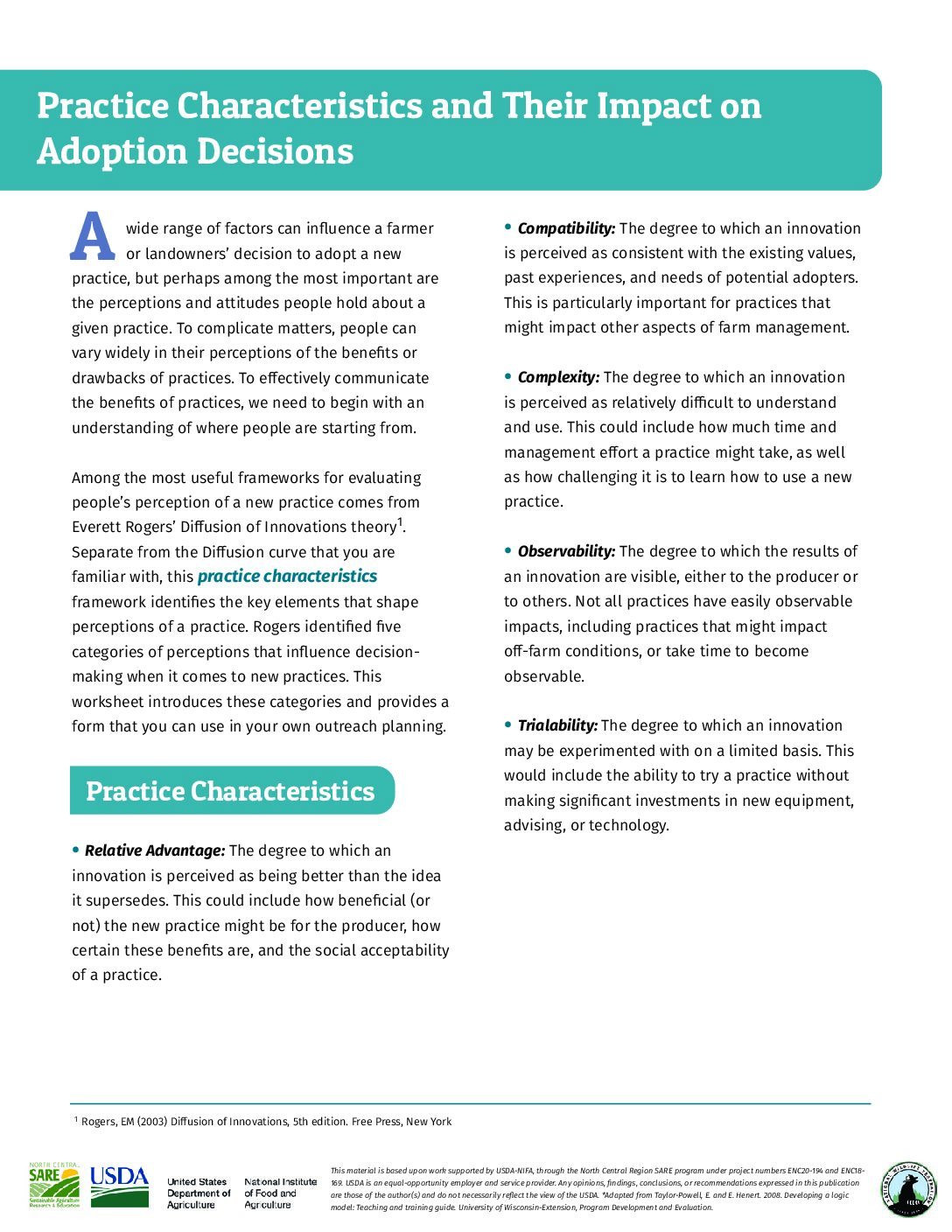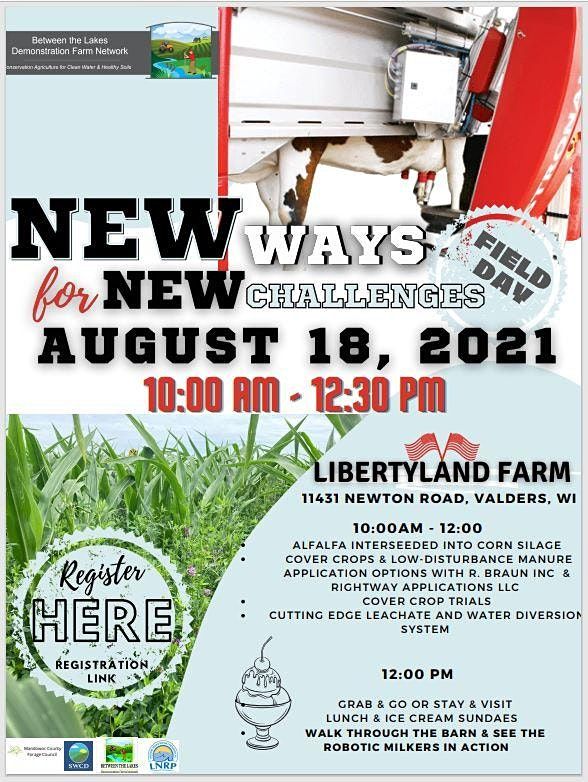A wide range of factors can influence a farmer or landowners’ decision to adopt a new practice, but perhaps among the most important are the perceptions and attitudes people hold about a given practice. To complicate matters, people can vary widely in their perceptions of the benefits or drawbacks of practices. To effectively communicate the benefits of practices, we need to begin with an understanding of where people are starting from.

Among the most useful frameworks for evaluating people’s perception of a new practice comes from Everett Rogers’ Diffusion of Innovations theory. Separate from the Diffusion curve that you are familiar with, this practice characteristics framework identifies the key elements that shape perceptions of a practice. Rogers identified five categories of perceptions that influence decision-making when it comes to new practices. This worksheet introduces these categories and provides a form that you can use in your own outreach planning.
Practice Characteristics
- Relative Advantage: The degree to which an innovation is perceived as being better than the idea it supersedes. This could include how beneficial (or not) the new practice might be for the producer, how certain these benefits are, and the social acceptability of a practice.
- Compatibility: The degree to which an innovation is perceived as consistent with the existing values, past experiences, and needs of potential adopters. This is particularly important for practices that might impact other aspects of farm management.
- Complexity: The degree to which an innovation is perceived as relatively difficult to understand and use. This could include how much time and management effort a practice might take, as well as how challenging it is to learn how to use a new practice.
- Observability: The degree to which the results of an innovation are visible, either to the producer or to others. Not all practices have easily observable impacts, including practices that might impact off-farm conditions, or take time to become observable.
- Trialability: The degree to which an innovation may be experimented with on a limited basis. This would include the ability to try a practice without making significant investments in new equipment, advising, or technology.
This framework has been shown to be helpful in understanding different decisions when it comes to cover crops, no-till, field buffers, and nitrogen management practices. For example, while cover crops are seen by some has having relative advantages, including building soil health and reducing erosion, and are relatively trialable, many see the practice as complex (especially timing and species decisions), not highly compatible with current production systems (primarily concerns over termination and interfering with spring field operations), with benefits that are not always observable (improvements in soil health take time to accrue and are not always easy to see without certain types of soil tests).
You can use the attached forms in your outreach planning by identifying potential motivations and barriers for your target audiences. You can work with your team to fill these tables in based on your experiences with producers. This process is most effective when done in collaboration wit real members of your intended audience though. By sitting down and using this framework to guide your conversation, you can learn about how farmers or landowners perceive of the benefits or downsides of your target practices.
Example: Motivations for Practice Adoption
| Practice | Relative Advantage | Compatibility | Complexity | Observability | Trialability |
|---|---|---|---|---|---|
| No-till | X | X | X | ||
| Cover crops | X | X | |||
| Filter Strips | X | X | X | X | |
| Grassed waterways | X | X | X | X |
Example: Barriers to Practice Adoption
| Practice | Relative Advantage | Compatibility | Complexity | Observability | Trialability |
|---|---|---|---|---|---|
| No-till | X | X | X | ||
| Cover crops | X | X | X | ||
| Filter Strips | X | X | |||
| Grassed waterways | X | X | X |
 Download: Practice characteristics worksheets
Download: Practice characteristics worksheets


